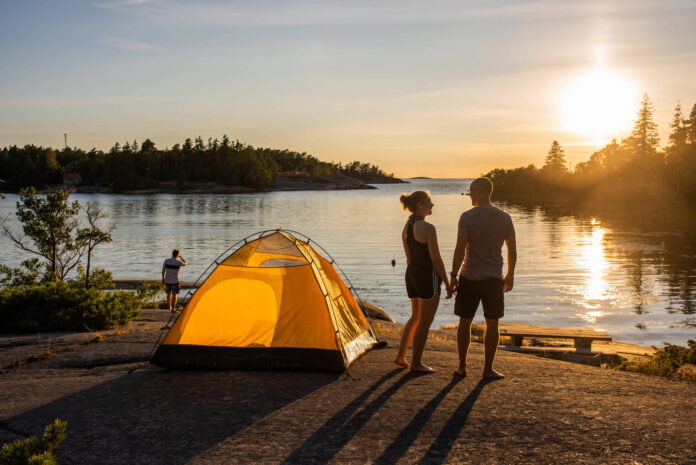Are you planning on heading to one of the world’s remote locations for a vacation in the near future? If so, you’ve probably already done some research on the local conditions and what to bring along. The unique feature of venturing into non-tourist towns, cities, and backwater areas is that you never really know what to expect — and for this reason, we’re sharing our 4 top tips for remote travel.
Hong Kong
Regarding the surprises you may encounter and why it’s important to know our top tips for remote travel is because you never know what to expect. For instance, those who travel to places like Sri Lanka, the southwest coast of Indian, or Myanmar (Burma), should be ready for unavailable internet and cellphone connections, unreliable supplies of fresh water, potential health hazards, and more.
What is the best way to avoid getting stuck without a way to communicate or without fresh food? Fortunately, many have visited these out-of-the-way places in years past, so you won’t be the first outsider to arrive. However, it’s still necessary to be as prepared as possible. That means having a workaround for internet outages, dropped cell calls, shelter, warm clothing, and other necessities of life. It can be particularly unnerving to spend a significant amount of capital on a major trip only to end up without a way to contact someone back home or convert US funds into local currency.
Consider the following top tips for remote travel if your next excursion includes a place that is truly off the beaten path.
4 Top Tips For Remote Travel
 Sham Shui Po, Hong Kong. Photo: Tatum Ancheta
Sham Shui Po, Hong Kong. Photo: Tatum Ancheta
1. Save Big by Paying in Advance
For many remote vacations, the single largest expense, after lodging, is airfare. It’s no surprise that the cost of a couple of round-trip tickets halfway around the world can set you back a fair piece. The good news is that most airlines offer major discounts on advanced bookings, especially when the destination city is in a remote area like central Africa or Greenland.
That’s why so many people who plan unique, faraway trips take out personal loans to cover up-front expenses. Making arrangements for a hotel in Myanmar is much easier and less costly if you’re able to contact the management directly via email and commit to a specific set of future dates. Typical savings for such arrangements can amount to almost half off the normal prices. The same is true for airfare. Taking out a personal loan to pay for all the key expense items as much as a year ahead of time gives travelers peace of mind and can help them save a ton of money at the same time.
2. Buy a Water Pack
 Hiking Cathedral Rock in Sedona.
Hiking Cathedral Rock in Sedona.
Those handy little backpacks that hikers and joggers use in hot weather can be a remote tourist’s best friend.
The packs are inexpensive and can hold up to a gallon of water. The ideal way to use them in places like central Africa, Sri Lanka, and Southern China is to refill them from trusted sources at least once per day. At their heaviest, they weigh eight pounds and easily fit underneath a regular backpack. There’s also a convenient sipper straw that makes it easy to drink whenever you feel the need, without having to take the pack off.
Water packs are definitely one of our top tips if you’re going to remote travel.
3. The Money Conundrum
 FLIMS, Wanderung Alp Mora
FLIMS, Wanderung Alp Mora
There are so many urban legends about tourists who have money exchange problems in remote areas, you’ve no doubt heard a few of them. There’s a reliable way for modern-day travelers to prevent those kinds of difficulties. Consider carrying a small amount of US cash with you, in single dollar bills. In addition, carry at least one major credit card, some Travelers’ Cheques, and local currency. Don’t forget to include local coins in your stash of carry-around money. That’s because many remote locations feature vending machines for essential items like water, aspirin, and toiletries. Some of the machines are ancient and only operate with local coinage.

Additionally, consider purchasing some cryptocurrency, like bitcoin, and having a way to access it via a smartphone or bank card. These days, crypto ATMs are popping up in some of the most unexpected locations. The goal is to have several different forms of money readily available no matter where you are. US dollar bills can get you out of many tight spots, even if the locals speak zero English and won’t take your Travelers’ Cheques or plastic. Never assume you’ll have access to electronic banking services in small cities and towns.
4. The Phone Problem
 Waldorf Astoria Maldives Ithaafushi
Waldorf Astoria Maldives Ithaafushi
No matter how advanced the technology on your smartphone is, there’s a very good chance it will stop working in backwoods regions. Fortunately, even tiny farm towns in places like Myanmar and Sri Lanka have old-fashioned payphones that accept local coins. That’s one reason it’s important to carry a reasonable number of coins on your person while journeying to distant locales where outsiders rarely go.
If you aren’t sure how to operate an unusual payphone, ask a local person to help you. Sometimes, using one of the old machines will be the only way to contact someone back home and let them know you’re alright.
Travelbinger is proud to be a publisher with Google News and Apple News.
Honestly… best laptop ever??
More stories:
7 things you need to know about traveling to Dominican Republic
Expert review: Nouhaus Ergo3D Ergonomic Office Chair for remote working
Cozy Earth sheets review: are they really the world’s softest sheets?
Expert review: Nouhaus Ergo3D Ergonomic Office Chair for remote working
Some of the links in this post are affiliate links. If you click on the link and purchase the item, I will receive an affiliate commission. Please do! I’m a one-man team for this website, so any help is sincerely appreciated.
Travelbinger is now on YouTube! Subscribe here for exclusive travel tips and advice from founder Jimmy Im. Follow us on Twitter, Facebook and Instagram.










